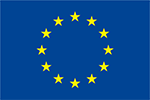Dr. Dominique Petit

CNRS and Université de Montpellier (Montpellier Cedex 5, France)
Tel:
+0467143479
E-mail:
Research interests:
Directeur de Recherche CNRS section 05
Since 2005 I have developed an NMR/MRI platform to explore the multi-scale dynamics of simple or complex confined fluids from fraction of nm to a few cm. I applied this topic to proton transport in fuel cells, to water transport in cements and concretes, to the ionic conduction of confined ionic liquids for lithium batteries, etc. Such a large spatio-temporal domain can be explored by combining several techniques such as spectroscopy, high field relaxometry, rapidly variable field cycling relaxometry (Stelar), diffusometry and MR imaging. This platform has been transferred from the PMC laboratory of the Ecole Polytechnique to the BioNanoNMRI platform of the University of Montpellier, led by Christophe Goze-Bac.
BioNanoNMRI plateform: The exploration of the multi-scale dynamics of confined fluids will be refocused on medical, animal and plant issues, taking advantage of the multidisciplinary approach developed at BioNanoNMRI, as illustrated by the nine people who supported the COST EURELAX project as secondary authors: Christophe Goze-Bac (Physicist); Prof. Michel Zanca (Physician and Physicist); Christophe Coillot (Electronicien); Éric-Laurent Nativel (Electronic Engineer); Prof. Florence Perrin (Biologist); Corinne Lautier, (Biologist); Yannick Guari (Chemist); Jean-Luc Verdeil (Agronomist); Dominique Petit (Physicist). The BioNanoNMRI platform has several MRIs in addition to the multi-scale NMR/MRI platform. In particular, Florence Perrin and Corinne Lautier, both INSERM researchers and teachers at the University, cover major fields of biology and biochemistry. For Chemistry and Agents of Molecular Contrast Yannick Guari leads the IMNO team of the ICGM (Charles Gerhardt Institute) and participates with us at BioNanoNMRI in several projects of synthesis of agents of molecular contrast both in relation with doctors like Michel Zanca than with agronomists such as Jean-Luc Verdeil, responsible of histocytology and plant cell imaging platform for the CIRAD. The electronics engineers Christophe Coillot and Éric Nativel develop antennas adapted to small animals and plants. In addition, they have developed an original method of NMR and MRI detection by electric fields. The interest in relaxometry is that this method does not impose a selective tuning. Finally, all these researchers are currently using either micro-imaging imagers or small animal imagers at the level of the BioNanoNMRI platform or medical MRIs at the CHU Montpellier (Michel Zanca, functional imaging).


